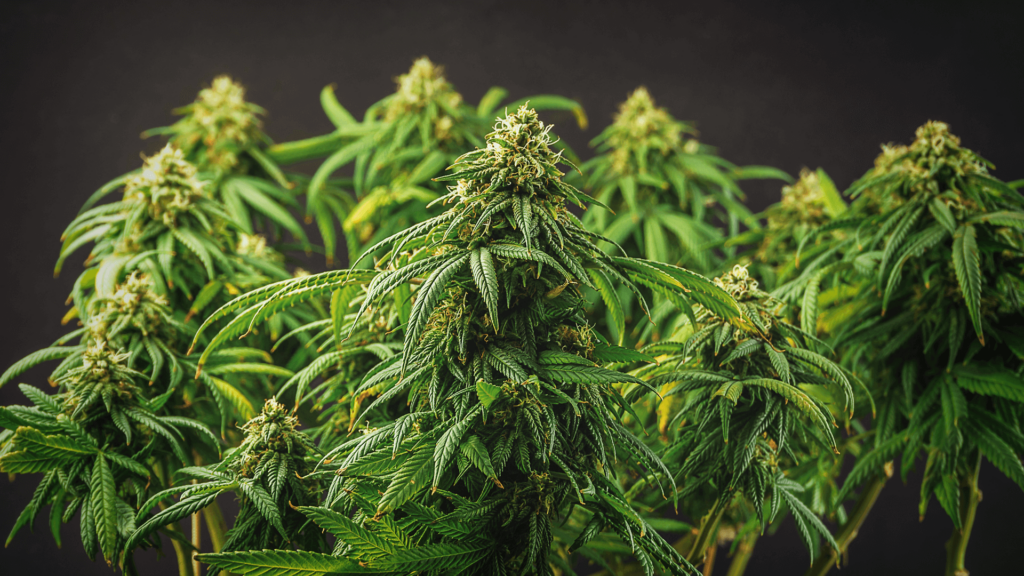Changes in marijuana legislation may give rise to a whole new wave of home growers. This is excellent news, as growing cannabis plants can be very satisfying. It’s an enjoyable pastime and home growing can save you money in the long term. More importantly, you control the quality and quality of your weed.
But as all veteran weed growers know, it’s not without problems. The chief ones are mold, bud rot, and root rot. These common cannabis growing issues can spell doom for your homegrown crops. That’s why we compiled a guide to identifying bud rot, mold, and root rot in marijuana.
Read on, and you’ll discover how to spot and treat these cannabis plant problems. Even better, you’ll also learn how to prevent them from happening in the first place.

Bud rot is a common issue in cannabis cultivation, usually occurring during the cannabis plant’s flowering stage. It is a destructive mold that targets the core of cannabis buds. Mold develops in the cores of the cannabis buds, breaking the bud down, leading to their decay.
Molds are sometimes good things in the plant kingdom. They are fungi that develop in warm, humid conditions and are a natural part of the ecosystem. They fulfill an essential function: breaking down dead plant material. However, if they form on your cannabis plants, they can lead to bud rot.
Some plants are more susceptible to this problem than others, so you must learn how to identify it as soon as possible.
Identifying bud rot is challenging until it is pretty advanced, as it’s difficult to detect in the early stages. But as you become more familiar with growing your own cannabis, you’ll learn to look for the signs.
When bud rot first appears, it will look white, but the bud will turn gray and black as the decay progresses. It will also become slimy and mushy.
You’ll be able to smell the mold, too. It makes the buds smell musty.
Bud rot is caused by moisture buildup in the cannabis plant. The mold that causes bud rot often occurs in outdoor cannabis grow areas after heavy rainfall. This is most common when the buds are large and dense toward the end of the growing season.
Two factors make bud rot more likely:
While these are the most common causes of bud rot, some plants have a weaker immune system and are more prone to this mold problem than others.
Bud rot can spread to other parts of the plant or neighboring plants via the spores it produces.
These spores are dispersed through the air, invisible to the naked eye. However, because it is sometimes difficult to spot in the earliest stages, you may miss areas it has spread to. That does not mean that all hope is lost, though. There are ways to treat the plants that have it and try to prevent it in the future.
Ensure that you know how to grow marijuana outdoors before you attempt to grow it. Growing your weed is not that difficult when you know what you’re doing. However, rushing into the project without adequate knowledge often leads to plant problems like mold and rot. Prevention is better than cure!
But because it’s hard to spot bud rot initially, you may have to intervene when it is already established.
Once your plant has the mold that causes bud rot, you have to discard the infected parts. There’s no way to treat it and reverse the damage.
Let’s examine the best ways to do both.
Ventilation is essential for indoor growing, as it can reduce the risk of mold and bud rot.
When drying your cannabis buds, be sure to allow enough ventilation. The drying area should also be dark, and the air should be dry. If it’s too humid there, you’ll need a dehumidifier. You may also need an AC unit if it’s hot, as heat is also a factor in mold and rot development.
Keep your drying area at 65° to 70° F with 50–55% humidity. Drying the buds is critical for mold and rot prevention, as it removes the moisture that allows these issues to develop. Never rush this process. It can take up to two weeks, depending on the ambient conditions.
After drying, your cannabis buds should be stiff, dry, and crips and stems will snap easily. Remember, any remaining moisture will cause potential problems. So, if they don’t seem dry enough, allow them to dry for longer before curing.
Maintain the same temperature and humidity conditions mentioned above for curing as well. Cure your buds in airtight jars, preferably glass. Fill them to about two-thirds full and seal them tightly. Airtight seals prevent air, light, and moisture from entering, which can potentially develop mold.
‘Burp’ the jars regularly by opening them briefly to let good air in and accumulated stale air out. Do this at least once a day for the first two weeks. Give them an occasional shake to encourage enough room between the buds.
Cut away any parts of the plant that you identify as infected with bud rot. Inspect the rest of the plant thoroughly, and discard the entire plant if in doubt. It’s better to do this than risk the whole crop, as the mold can quickly spread to the rest of your grow area.
It’s relatively easy to spot mold in your cured buds. When you break them apart, you can see it on the inside. Discard any contaminated buds, and wash your hands thoroughly before handling the rest of your product. Thoroughly clean any jars you had them in, too.
Also, ensure that any cutting tools you use are thoroughly sterilized afterward, to prevent contamination of other plants when pruning them. In this way, you can lessen the impact that bud rot has on your cannabis crops.
It’s not necessarily hazardous, but it can be harmful.
Infected cannabis buds are not suitable for use. Growers usually cut out the infected parts of the plant and discard them. You should wear a face mask when handling plants you believe may be infected. Ingesting mold spores can trigger allergic reactions or cause respiratory issues.
Cannabis root rot is not quite the same problem as bud rot, although fungus can play a role in both.
Bud rot is caused by a mold that thrives in warm, humid conditions. It affects the buds and, from there, can spread to surrounding areas.
Root rot is a fungal infection that affects the roots of your plants, impairing their ability to absorb oxygen and nutrients.
When your plants’ roots can’t absorb effectively water, oxygen, and nutrients, your plant will not be able to sustain growth. It will eventually die off. You have to rely on outward symptoms because you can’t see the roots when the plant is sitting in the soil.
If your plants have unhealthy-looking leaves that are curling, drooping, and yellowing, this may be due to root rot. Branches may also start to fall away. If not spotted and treated in time, root rot will kill a cannabis plant.
If you see these symptoms and have ruled out all other causes, it’s best to dig away at the soil and inspect the roots. You’ll probably know if it’s root rot or not before you even see the roots. The smell will tip you off. It’s pungent and unpleasant.
There are several causes of root rot in cannabis plants.
Overwatering, poorly draining soil or growing medium, and poor root ventilation are the leading causes. This is often caused by growing cannabis plants in containers that are too small, using soil contaminated by pathogens, or lacking sufficient drainage.
Seedlings and young plants are most vulnerable to the fungal contamination that leads to root rot. But root rot, if caught early enough, can be treated, and you can save the plant.
Growing your cannabis may seem like a good idea, and for many cannabis enthusiasts, it is. But if you don’t have ideal growing conditions, you’ll risk mold and rot problems that can compromise your entire crop. That’s a waste of your time, effort and money.
If you’re looking for good quality weed, the best thing you can do is buy from a reputable cannabis dispensary like Embarc. We stock everything you need, from flowers, tinctures, and concentrates to edibles, prerolls, and topicals..
Browse our extensive range online today, or pop into one of our stores for all your weed needs.
